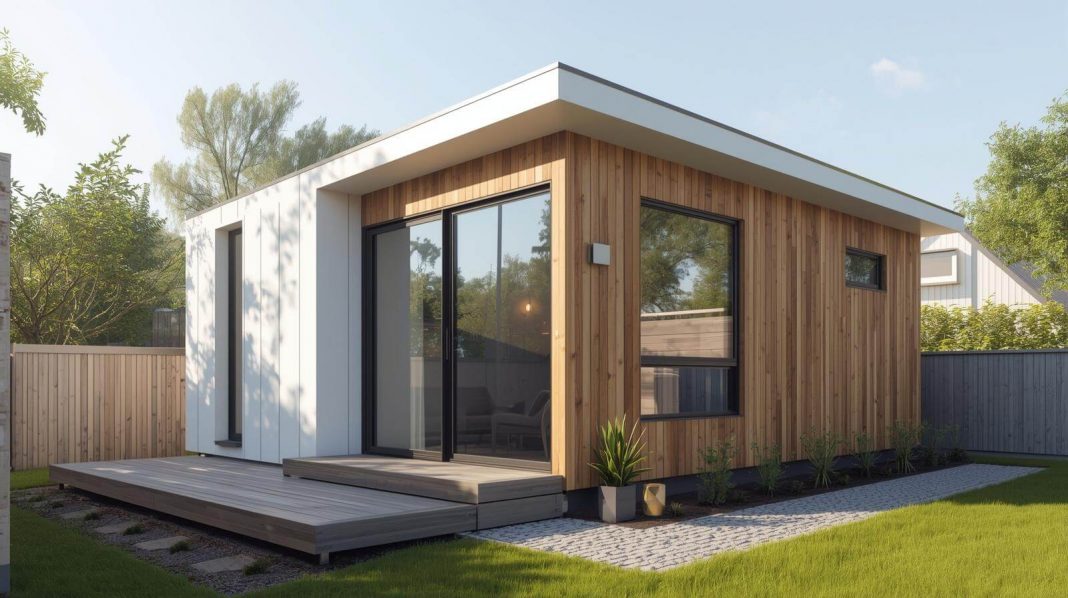The cost of modular home per square foot is one of the most common questions asked by U.S. homebuyers. Many people search for “cost of modular homes near me” only to find wildly different estimates. The truth is that modular homes USA prices depend not just on the modules themselves but also on land, permits, utilities, and customization. In this updated 2025 guide, we break down what price per square foot really means, give real examples, and compare state-level costs so you can budget with confidence.
What Does “Cost per Square Foot” Really Mean?
When builders advertise the cost of modular home per square foot, it often looks like a fixed number. In reality, it usually includes only:
-
Factory-built modules (walls, floors, roof)
-
Delivery to your site
-
Basic installation on a foundation
But this figure rarely covers:
-
Land purchase
-
Permits and local fees
-
Utility hookups (water, sewer, electricity)
-
Custom upgrades such as garages or premium kitchens
This is why one brochure might say $100/ft², while your final bill ends up closer to $160–$180/ft².
Real Examples of Modular Home Prices by Size
Here are 2025 price ranges that show how the cost of modular homes per square foot scales with size:
-
1,000 sq. ft. modular home → $90,000–$150,000
(starter home or cabin; basic finishes; minimal upgrades) -
1,500 sq. ft. modular home → $130,000–$240,000
(three-bedroom family home; mid-range finishes; optional garage) -
2,000 sq. ft. modular home → $180,000–$360,000
(larger ranch or two-story; custom kitchen, hardwood, energy-efficient features)
These examples show that the cost of modular home per square foot is highly influenced by upgrades and location.
Regional Modular Home Price Differences
Geography has a massive impact on modular home prices. The same design can cost almost twice as much depending on the state.
-
Texas – $85–$140/ft² (affordable land, strong factory network).
-
Florida – $100–$150/ft² (hurricane-resistant codes add costs).
-
California – $150–$220/ft² (highest demand + strictest regulations).
-
Northeast (NY, NJ, MA, CT) – $130–$200/ft² (permits and energy efficiency rules).
For example, a 1,500 sq. ft. family home that costs $135,000 in Texas may reach $280,000 in California.
What’s Included (and What’s Not)
When you see “$120 per sq. ft.” in marketing materials, always ask for details.
Usually included:
-
Factory modules
-
Standard finishes (drywall, flooring, roofing)
-
Transportation and initial setup
Usually not included:
-
Land purchase
-
Foundation and site preparation
-
Utility hookups
-
Taxes, permits, and inspections
-
Major customizations such as porches or luxury kitchens
Why the Cost per Square Foot Varies
Several factors explain why the cost of modular home per square foot is not a universal figure:
-
Foundation type – slab vs crawl space vs basement.
-
Location – permits, inspections, and labor costs differ by state.
-
Customization – garages, decks, and energy upgrades raise the price.
-
Utility setup – city water/sewer is cheaper than installing well + septic.
Even if two buyers are both quoted $120/ft², one may finish at $160/ft² after hidden expenses.
FAQ
What is the average cost of modular home per square foot in 2025?
Between $80 and $200, depending on the state, land, and finishes.
Does the cost per square foot include land?
No. Land is always purchased separately.
Why do modular home prices differ by state?
Local building codes, permit fees, labor costs, and land values make a big difference.
Are modular homes cheaper than traditional houses?
Yes, modular homes are typically 10–20% less expensive than stick-built houses, with shorter build times.
Conclusion
The cost of modular home per square foot is a helpful starting point, but it never tells the full story. Real modular homes USA prices include permits, site preparation, utilities, and customization. Always request a full written estimate and plan for at least 15% extra to cover hidden costs.
If you’re comparing modular homes USA prices, remember that per-square-foot numbers are just a baseline. With careful planning, modular homes remain one of the smartest and most affordable ways to build in the U.S. in 2025.
